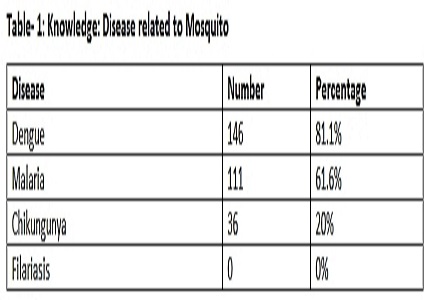Minimally invasive plate osteosynthesis (MIPO) of periprosthetic femoral fractures with percutaneous cerclage wiring for fracture reduction: tips and technique
Abstract
Introduction: Periprosthetic femoral fractures (PPFs) associated at or near a well-fixed femoral prostheses (Vancouver type-B1) present a clinical challenge due to the quality of the bone stock and instability of the fracture. Combining closed reduction techniques with minimally invasive plate osteosynthesis (MIPO) or intramedullary nailing is a technically challenging procedure, especially when dealing with complex femoral fractures such as periprosthetic fractures. Cerclage wiring is a well known adjunct for fracture reduction and fixation. However, it is usually performed by open reduction, requiring wide surgical exposures, that results in soft tissue stripping.
Materials and Methods: In our original study 18 patients with periprosthetic femoral shaft fracture (mean age, seventy-four years; range, forty-seven to eighty-four years) were treated with the described percutaneous cerclage wire and MIPO techniques. One patient died two months postsurgery, leaving seventeen patients who were followed for a mean of 13.2 months.
Results and Discussion: Four patients sustained a spiral fracture pattern; three, an oblique fracture; and two, a wedge fracture. Closed reduction was successful in all but one case, and took a mean of 24.4 minutes (range, seven to forty-five minutes). The mean total operative time was 103 minutes (range, seventy-five to 140 minutes). Blood loss was <100 ml in all cases. All fractures united at a mean of eighteen weeks (range, sixteen to twenty weeks). No hardware failures were observed; one plate bent 100, but the bending did not progress and the fracture healed uneventfully at sixteen weeks. Seven of the nine patients were able to return to their previous level of mobility. During the application of the percutaneous cerclage wires, there were no vascular or nerve injuries and none of the patients returned with any wound complications.
Downloads
References
2. Goetze O. (Subcutaneous wire suture in oblique tibial fractures). Arch Klin Chir. 1933;177;445-9.
3. Xue H, Tu Y, Cai M, Yang A. Locking compression plate and cerclage band for type B1 periprosthetic femoral fractures preliminary results at average 30-month follow-up. J Arthro plasty.2011 Apr;26(3);467;e1. [PubMed]
4. Scott RD, Turner RH, Leitzes SM, Aufranc OE. Femoral fractures in conjunction with total hip replacement; J Bone Joint Surg Am. 1975 Jun;57(4);494-501. [PubMed]
5. Ricci WM, Bolhofner BR, Loftus T, Cox C, Mitchell S, Borrelli J Jr. Indirect reduction and plate fixation, without grafting, for periprosthetic femoral shaft fractures about a stable intramedullary implant. J Bone Joint Surg Am. 2005 Oct;87(10);2240-5.
6. Perren SM, Fernandez Dell’Oca A, Lenz M, Windolf M. Cerclage, evolution and potential of a Cinderella technology. An overview with reference to periprosthetic fractures. Acta Chir Orthop Traumatol Cech.2011;78(3);190-9.
7. Old AB, McGrory BJ, White RR, Babikian GM. Fixation of Vancouver B1 peri-prosthetic fractures by broad metal plates without the application of strut allografts. J Bone Joint Surg Br. 2006 Nov;88(11):1425-9.
8. Berend Kr, Lombardi AV Jr, Mallory TH, Chonko DJ, Dodds KL, Adams JB. Cerclage wires or cables for the management of intraoperative fracture associated with a cementless, tapered femoral prosthesis: results at 2 to 16 years. J Arthroplasty. 2004 Oct;19(7) (Suppl 2):17-21. [PubMed]
9. Kirby BM, Wilson JW. Effect of circumferential bands on cortical vascularity and viability. J Orthop Res. 1991 Mar;9(2):174-9. [PubMed]
10. Aleto T. Ritter MA, Berend ME. Case report: superficial femoral artery injury resulting from cerclage wiring during revision THA. Clin Orthop Relat Res. 2008 Mar;466(3):749-53. Epub 2008 Jan 10.
11. Apivatthakakul T, Phaliphot J, Leuvitoonvechkit S. Percutaneous cerclage wiring, does it disrupt femoral blood supply? A cadaveric injection study. Injury. 2013 Feb;44(2):168-74. Epub 2012 Nov 17.
12. Farouk O, Krettek C, Miclau T, Schandelmaier P, Tscherne H. The topography of the perforating vessels of the deep femoral artery. Clin Orthop Relat Res. 1999 Nov;(368):255-9. [PubMed]
13. Mehta V, Finn HA. Femoral artery and vein injury after cerclage wiring of the femur: a case report. J Arthroplasty. 2005 Sep:20(6):811-4. [PubMed]
14. Apivatthakakul T, Phornphutkul C, Bunmaprasert T, Sananpanich K, Fernandez Dell’Oca A. Percutaneous cerclage wiring and minimally invasive plate osteosynthesis (MIPO): a percutaneous reduction technique in the treatment of Vancouver type B1 periprosthetic femoral shaft fractures. Arch Orthop Trauma Surg.2012 Jun;132(6);813-22. Epub 2012 Mar 03. [PubMed]
15. Duncan CP, Masri BA. Fractures of the femur after hip replacement. Instr Course Lect. 1995;44:293-304.

Copyright (c) 2015 Author (s). Published by Siddharth Health Research and Social Welfare Society

This work is licensed under a Creative Commons Attribution 4.0 International License.


 OAI - Open Archives Initiative
OAI - Open Archives Initiative


